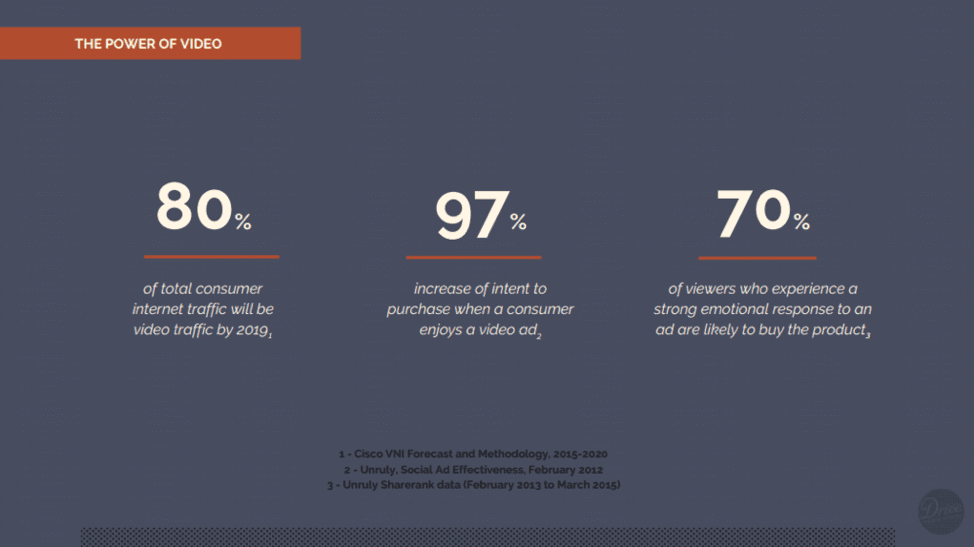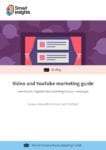The writing is on the wall and video is poised to take over cyberspace completely. According to statistics by Cisco, by 2021, all internet traffic will be video.
Right now there’s no more prime real estate for video marketing than YouTube. This isn’t merely a clip-sharing social-media site, it’s the number two search engine in the entire world after Google. It goes without saying, then, that if you want an effective digital marketing strategy for your B2B business, it should include YouTube.

Below we look at some of the most effective strategies B2B companies can implement to maximize their YouTube initiatives.
Create engaging vlogs and post regularly
If you’re a B2B that’s up to date on your content marketing strategies, that means you publish a company blog regularly. In 2019 you should absolutely be supplementing these blogs with vlogs. In these videos, you should build on the topics you discuss in your written blog and upload them to your YouTube channel (more on this below).
But perhaps you’re low on ideas. No problem. There are a number of types of vlogs you can post, and these include executive interviews, group panel discussions, customer testimonials, how-to tutorials, explainer videos – the sky’s the limit. Just make sure the content you’re producing is relevant and valuable to your audience and that you update the vlog on a consistent basis.
Most importantly, to ensure your digital distribution strategies remain viable, perform a regular content audit. Look at audit points such as the highest and lowest points of content performance, anomalies in data that didn’t align with expectations, the average of qualified data points, and others. By implementing a comprehensive auditing strategy, the content-marketing platform ClearVoice boosted monthly blog views to over 50K+ (from just 3K).
Upload videos of product demos and trade shows
In-person events have always been one of the top channels for generating B2B leads. Setting up a booth at a trade show and exhibiting a product demo is a great way to meet prospects, build relationships, and qualify leads.
Often, particularly for tech companies, this is a big investment in time and money. There’s a lot of pre-planning involved, plus you have to rent space, develop your presentations, pay for travel, splurge on client dinners, etc.
So if you’re going to commit all those resources, it’s best to maximize the impact of your in-person presence. The simplest, most efficient and effective way to do this is to film your trade-show or live event and upload it to YouTube. This way you’re not only generating sales leads real time in person but you’re also tapping into that crucial online video-viewing audience, 43% of whom research products or services online before buying.
Filming product demos and explainer videos is another good tactic. Also, if you’ve got a great webinar coming up, be sure to film it and upload it to YouTube. After all, 73% of B2B marketers and sales leaders say webinars are the best way to generate high-quality leads.
NASKOR B2B Trade Show 2017 from hajodrees on Vimeo.
Brand storytelling
Yes, storytelling has typically been the arena of B2C marketers to sell products to individual consumers and it’s not often thought of as a crucial marketing strategy for B2B companies. But as the omnichannel sales trend has become more prominent in recent years, the line between B2B and B2C becomes ever more blurred as the traditional sales funnel has been turned upside down. Potential customers are now actively searching out and researching companies on their own, and B2Bs need to adapt.
One way to do this is to appeal to those prospects out there with narrative storytelling. The desire for a narrative structure as a means of entertainment and escape is ingrained in all of us as human beings. So start producing videos that tell an engaging story about your brand, no matter how esoteric or specialized the product or service you’re selling is.
Another way to do branded YouTube content right is to focus on your staff. This humanizes your brand, which is important regardless of whether or not you’re in the B2B or B2C space. Few executed this better than Microsoft did with their “All Aboard the Brilliant Bus,” Super Bowl ad, which highlighted Microsoft’s community outreach.
Ads like this above connect with many people’s innate sense of altruism and make them want to be in business with that particular brand. There are some other effective examples that used storytelling to reach audiences by everyone from IBM to Salesforce to General Electric and Boeing.
Build your YouTube Channel
Expanding on the point mentioned above, even though you’re a B2B operation you’re going to need to treat this marketing medium the same way a B2C company would. And besides creating the engaging content we discussed, you need to have your own YouTube Channel.
While it isn’t difficult to set up your own channel, you will want to adhere to some best practices to ensure you leverage this social media platform to maximize your marketing effectiveness.
- Ensure banners and icons are consistent. You should view your YouTube channel with no less importance than your company website homepage. Therefore, make sure that any banners, icons, and logos you use on your YouTube channel are consistent with those on your other landing pages.
- Write a compelling channel description. The “About” section on your YouTube channel is more than a place to drop a pithy description of your business – if you optimize it correctly you can maximize the chances of your videos reaching the widest possible audience. This means using relevant keywords and hashtags to boost SEO. The description should be short and to the point, and above all else, it should include a clear CTA and link to your website.
- Organize your videos. You will no doubt be uploading different videos to your channel, whether they’re product demos, employee interviews, narrative vignettes, vlogs, webinars, etc. To ensure your audience easily finds what they’re looking for, you need to separate each of them according to format. YouTube allows you to easily do this by creating custom playlists by topic.
Supplement your marketing with video advertising
If your video content is engaging and you post it regularly, you stand a good chance of building an audience from the ground up, organically. That said, to help the process along and maximize the reach of your videos, you’ll want to consider YouTube ads. There are a number of YouTube ad formats out there, each unique in its own way. These include display ads, overlay ads, skippable ads, non-skippable, and more.
So how do you know which is right for your operation? It all depends on your specific business and your marketing style. Still, skippable ads are the most common, and for good reason: they allow viewers to skip the advertisement after just a few seconds have elapsed.
A great benefit to this is that skippable ads are the only ones available on all devices (so they appeal to modern audiences who crave a multi-channel experience), and you only pay for the ad once the viewer reaches 30 seconds of the advertisement. That means, though, that the onus is on you as a marketer to create an ad that will hook viewers quickly and keep them watching until it ends.
Conclusion
There may be no one-size-fits-all strategy for your business regarding YouTube. That said, by adhering to the above best practices you should be able to position your company ahead of the competition and ensure your video content reaches the widest audience possible.
